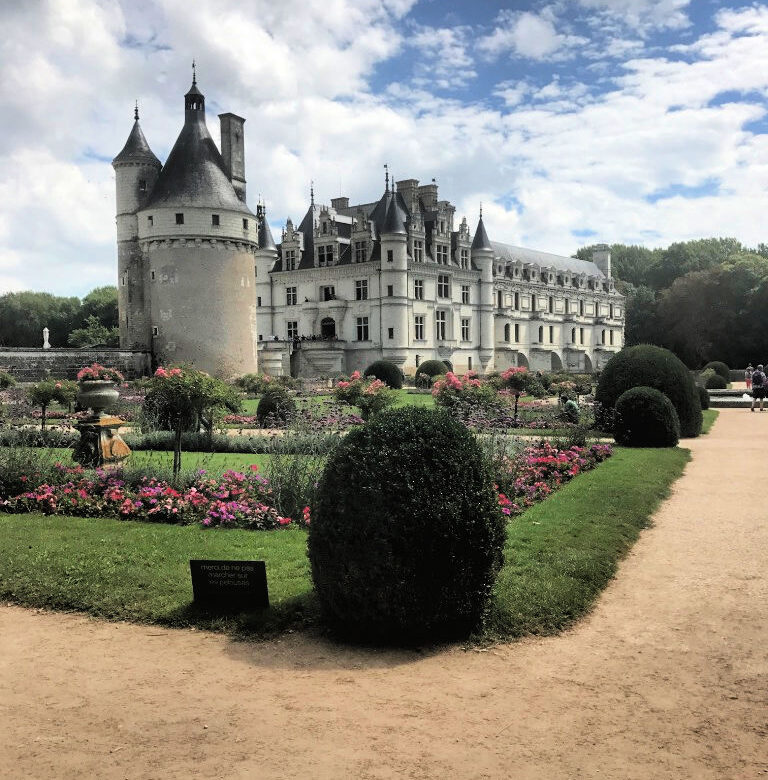
The Château de Chenonceau: the Ladies’ Château
The Château de Chenonceau, located in the Loire Valley in France, exemplifies ladylike elegance, from its impeccable profile to its extravagantly decorated interiors. With bright white façades, turrets and its iconic bridge, the Château de Chenonceau is a Renaissance masterpiece. Its highly sophisticated polish is due in part the impact of the great ladies of history on its architecture, in particular, the “builder queen”, Catherine de’ Medici. Particularly known for the influence of women on its design, it is known as the Ladies’ Château.
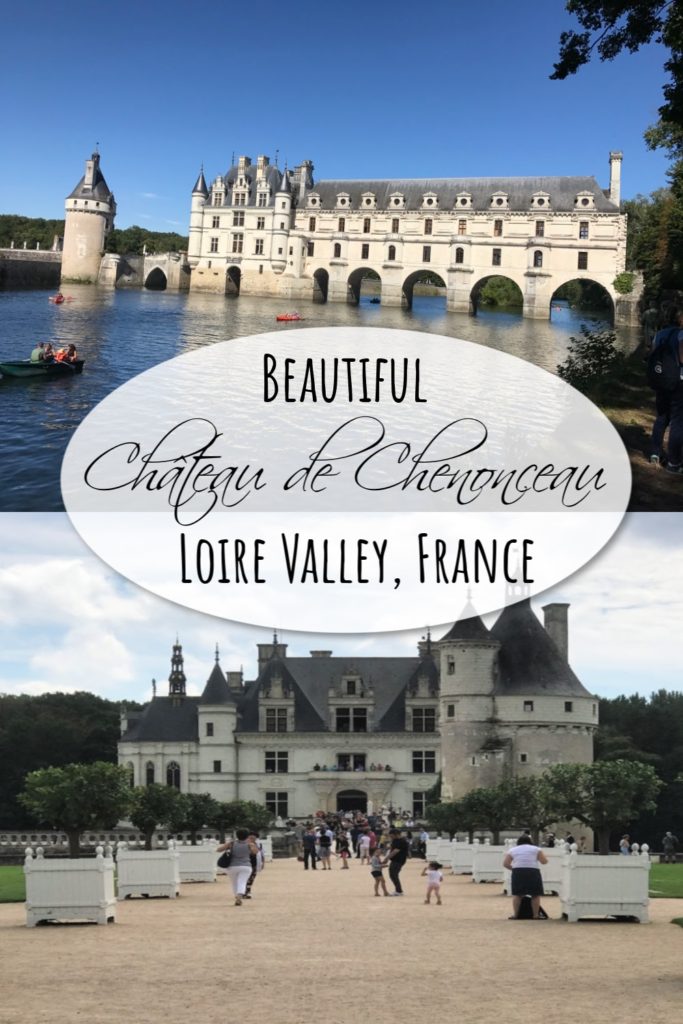
Note: This post contains links that by clicking, at no cost to you, I may earn a commission which helps pay for delivering all of this content.
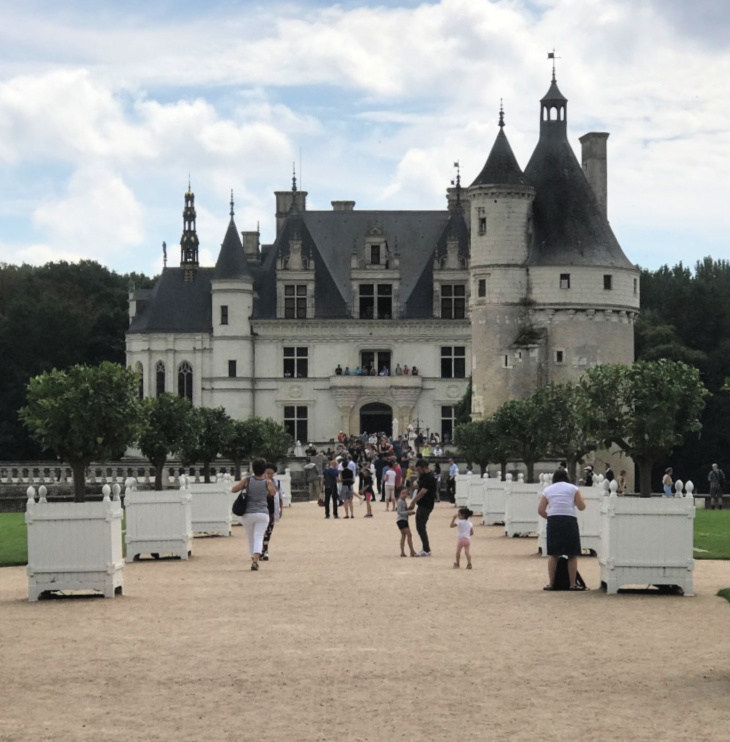
In 2019, the Château de Chenonceau celebrated the 500th birthday of Queen Catherine de’ Medici, born in Florence in 1519, and an important figure in the castle’s design.
History of the Château de Chenonceau
The history of the Château de Chenonceau is particularly known for the almost uninterrupted succession of women who built, embellished, protected, restored and saved the château. It started out as a medieval Château in the 12th and 13th centuries, and all that remains is the dungeon known as the “Tour des Marques”. The builders of the Château as it is now were Thomas Bohier, but especially his wife, Catherine Briçonnet, from 1513 to 1517.
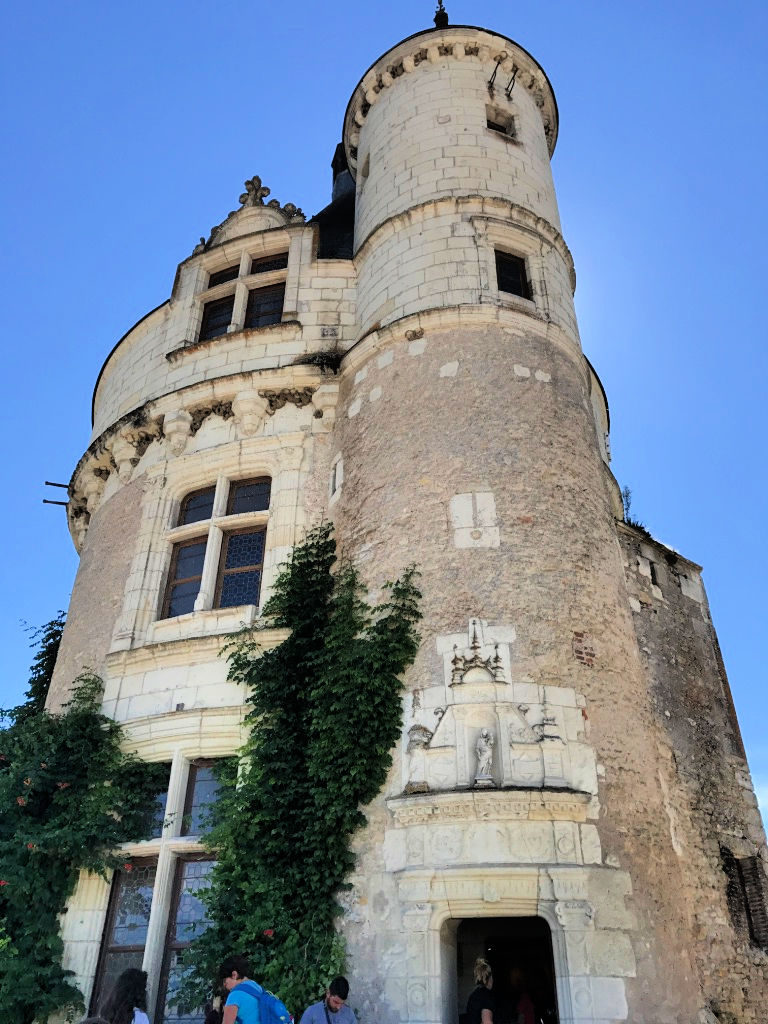
In 1535, Francois I took possession of the Château from its owner due to unpaid debts to the crown. Next, King Henry II offered it, not to the Queen, but to his favorite mistress, Diane de Poitiers, who became quite attached to the Château along the river. In 1555, she commissioned Philibert de l’Orme to build the arched bridge joining the Château to its opposite bank on the river. Diane also famously oversaw the planning of an extensive garden, complete with flower and vegetable gardens and fruit trees.
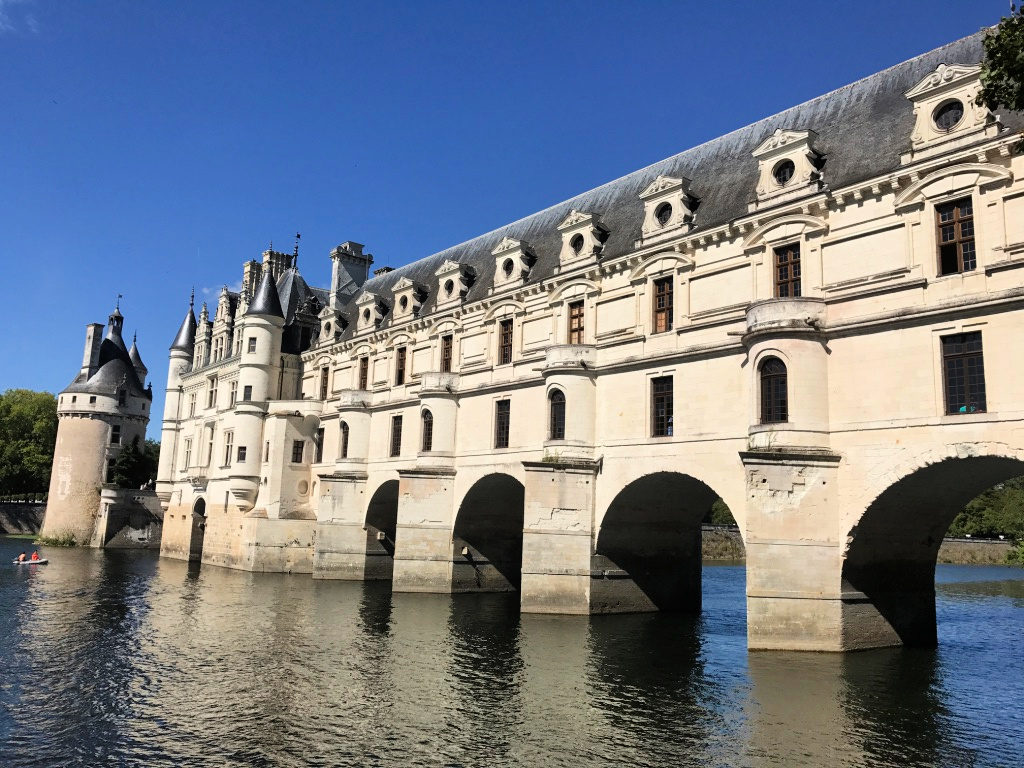
In 1559, following the death of her husband King Henry II, Catherine de’ Medici evicted Diane de Poitiers and made Chenonceau her own favorite residence. While throwing lavish and decadent parties, she ruled France from her office at the Château, known as the “Cabinet Vert” (the Green Office).
When Catherine died in 1589, her daughter-in-law, Louise de Lorraine, who was married to King Henry III, inherited the castle. She was at Chenonceau when she learned of her husband’s assassination. As a widow, she spendt 11 years roaming the halls in mourning, amidst black tapestries stitched with skulls and crossbones.
In 1733, the estate was sold for 130,000 livres to a wealthy squire named Claude Dupin. His wife, Louise Dupin, the “Dame des Lumières” (Lady of the Lights), attracted the most erudite of the Enlightenment, the French philosophers and academics, in her literary salon. This exceptional woman was the first to write the “Code des Droits de la Femme” (Declaration of the Rights of Women) with the help of Jean Jacques Rousseau.
In 1864, Madame Pelouze, born Margaret Wilson, a wealthy heiress, acquired the Château. She commissioned the architect Felix Roguet to restore it, including removing several of Catherine de’ Medici’s additions. Unfortunately for Madame Pelouze, between the cost of her extensive renovations and the extravagant parties she threw, her finances were exhausted and the Château was seized and sold.
Finally, in 1913, Henri Menier, part of a family famous for their chocolates, purchased the Château and the family still owns it to this day. During WWI, the gallery was used as a hospital ward. During WWII, the Château was bombed by the Germans in June 1940. The gallery was the only way to access the free zone and the Menier family facilitated clandestine passage for those escaping Nazi tyranny. Harry Truman visited the castle during his first visit to France.
The château has been open to visitors since 1913 thanks to the family that owns it. And, faithful to its lineage, it still receives royalty, state officials and celebrities to this day.
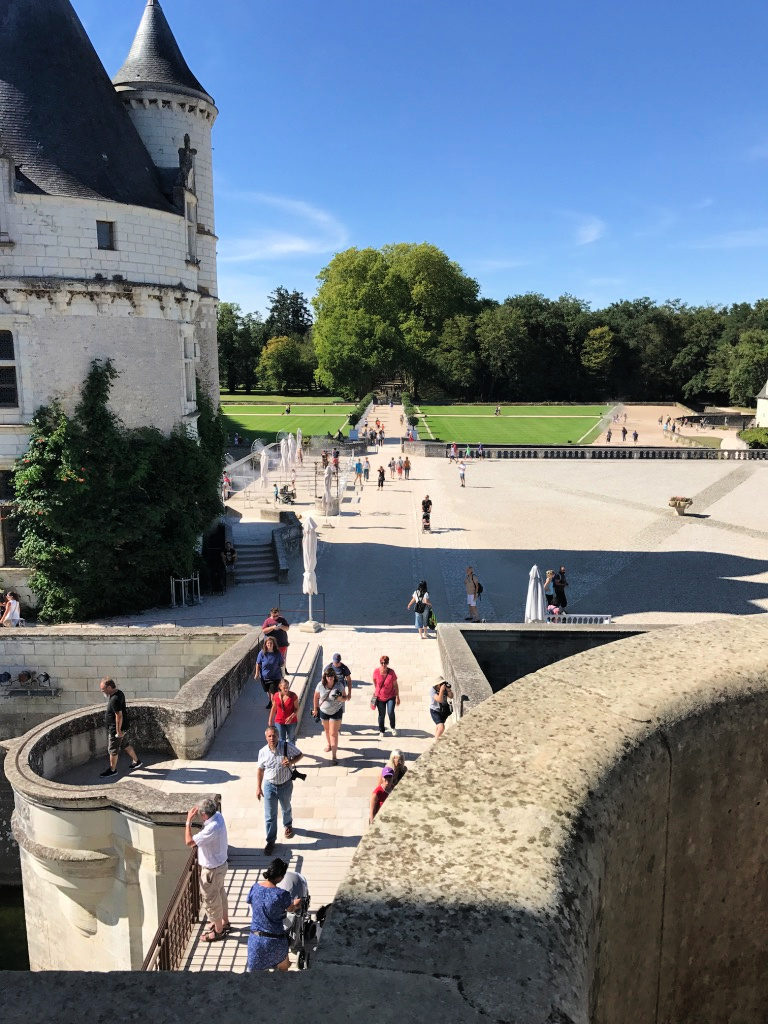
Interiors of the Château de Chenonceau
Based on plans from a Venetian palace, Catherine de’ Medici, queen of Florentine origins, built the two galleries on the Cher river, making a sort of Ponte Vecchio. From the kitchens to the bedrooms to the living rooms, passing through two majestic galleries, wandering through the château allows visitors to understand the history of the place.
The chateau is an architectural collection composed of three distinct parts:
- The main two-story building built on the foundations of what was once a medieval mill.
- The long gallery which rests on the 5 arches that cross the Cher river
- The “Tour des Marques”, the remnant of the medieval, original chateau
There are 20 wonderfully preserved rooms which are open to the public. I was astonished at the incredible old furniture, paintings, and rare tapestries.
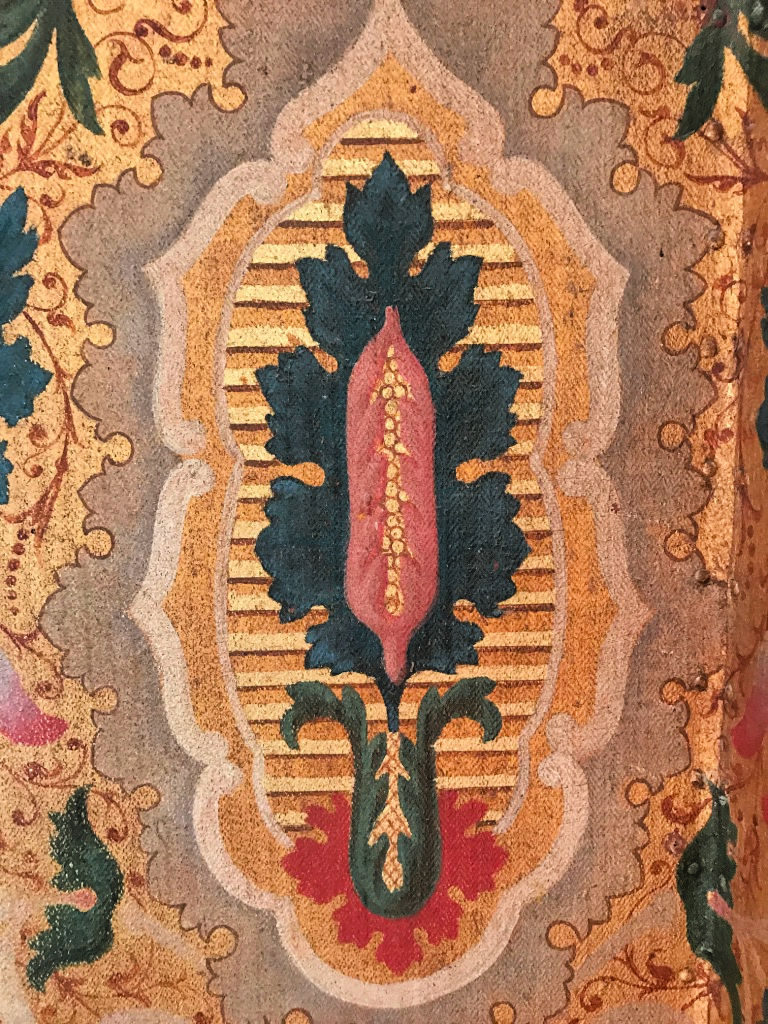
Among the most notable aspects of the visit were the Chapel, the Cabinet Vert (Catherine de’ Medici’s “Green Office”), the bedrooms of Diane de Poitiers and Catherine de’ Medici, the Gallery, the salons of Francois I and Louis XIV.
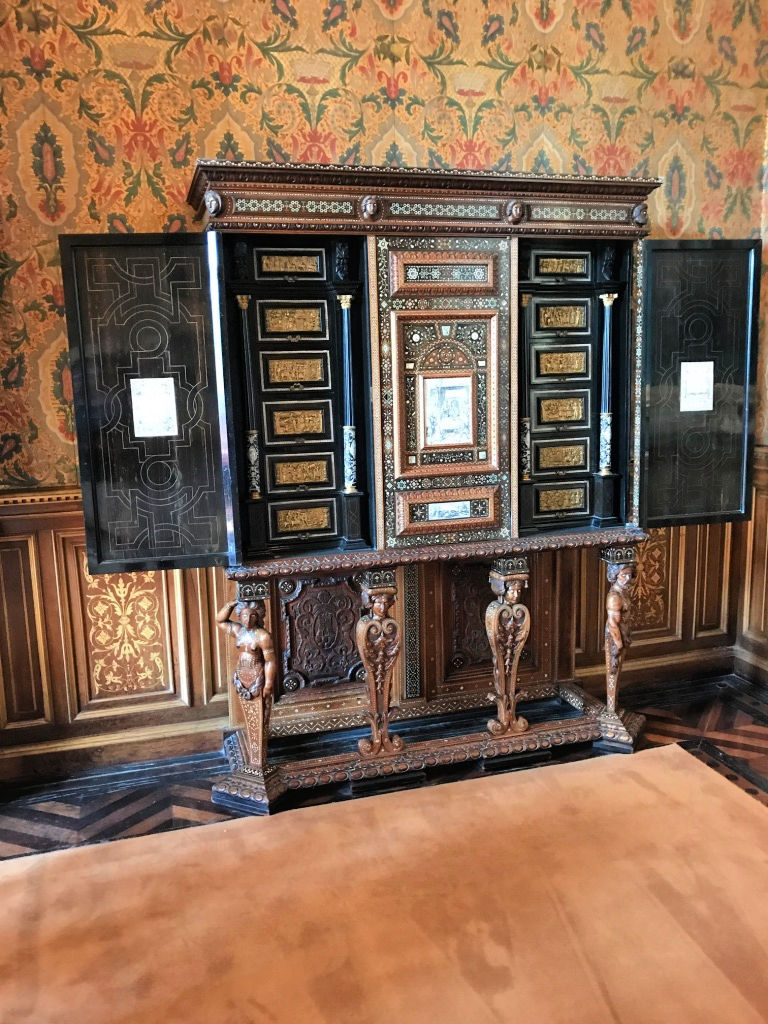
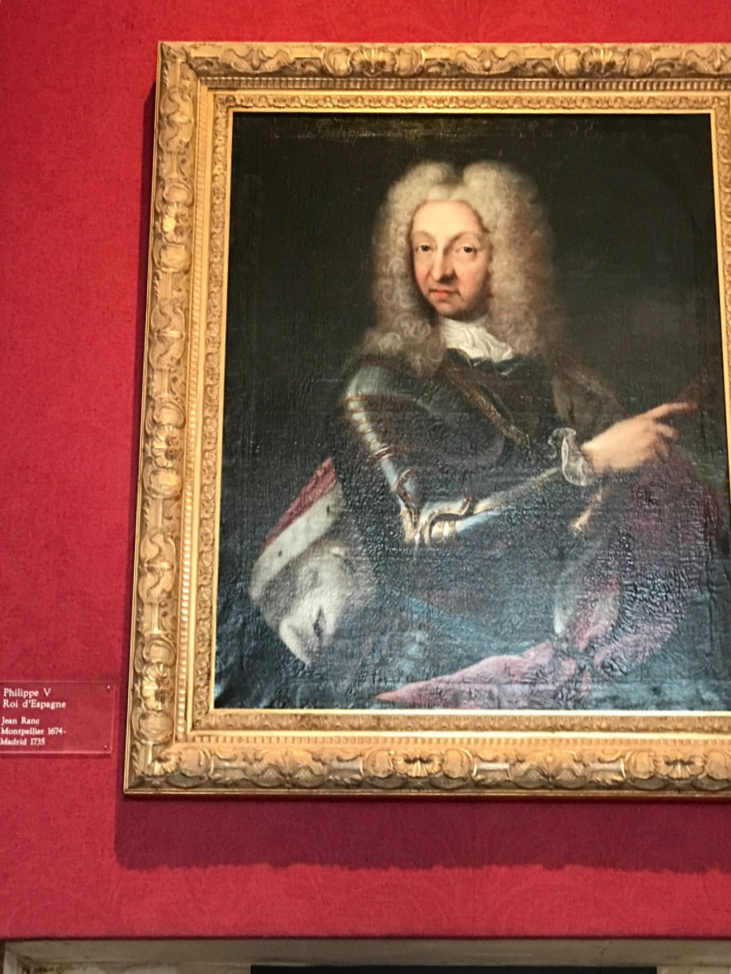
Many museum paintings like this one adorn the walls 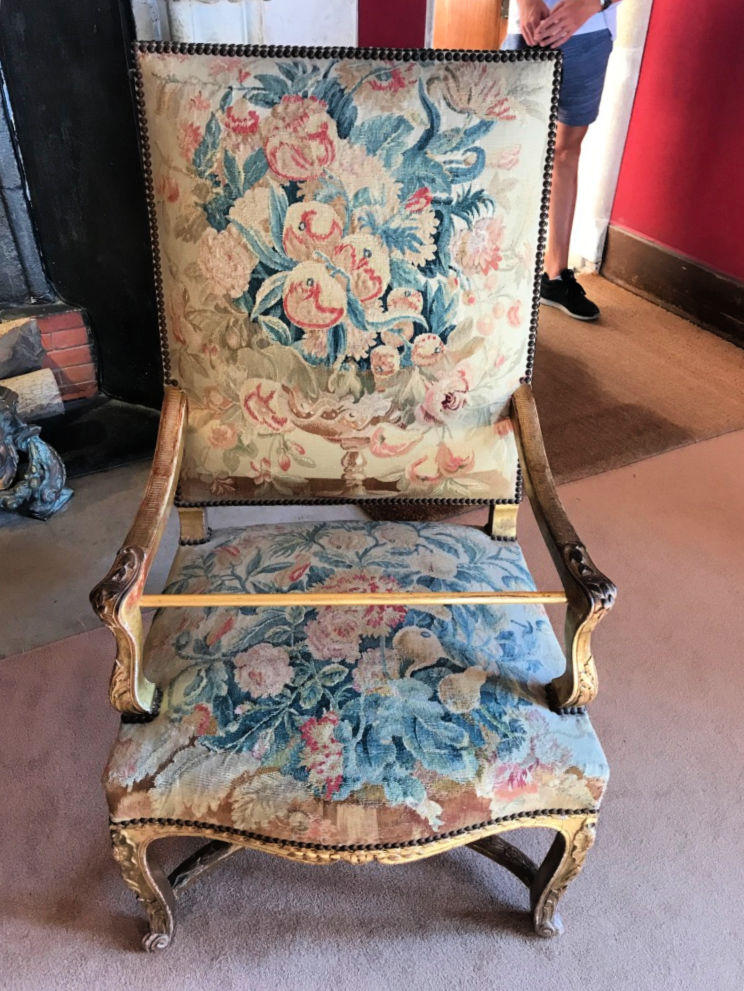
The furniture on display is an interior designer’s dream. 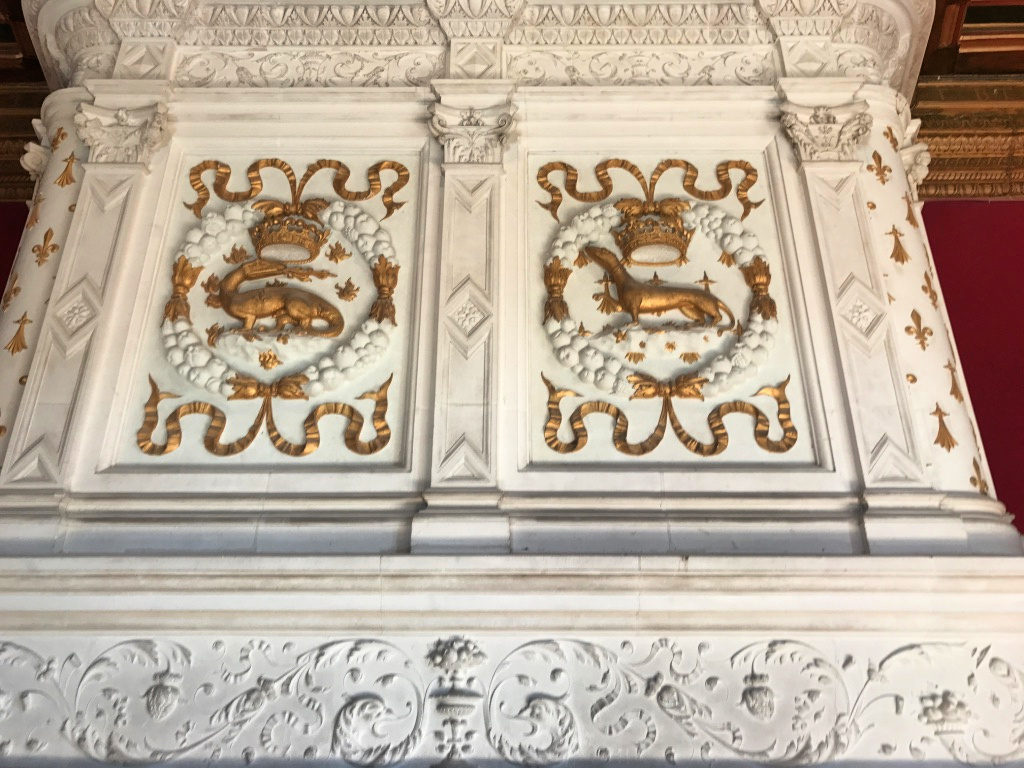
Ornate armoire
I especially loved the kitchen. All the tools and accessories are perfectly preserved and on display, giving visitors a real opportunity to experience life in the 16th century.
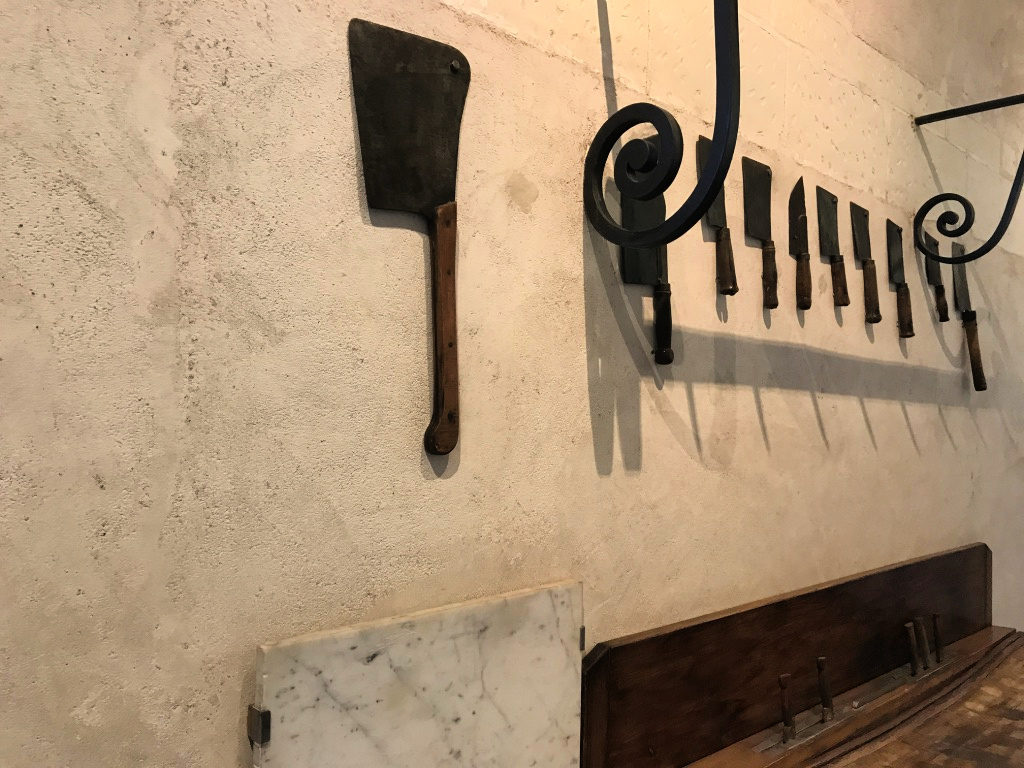
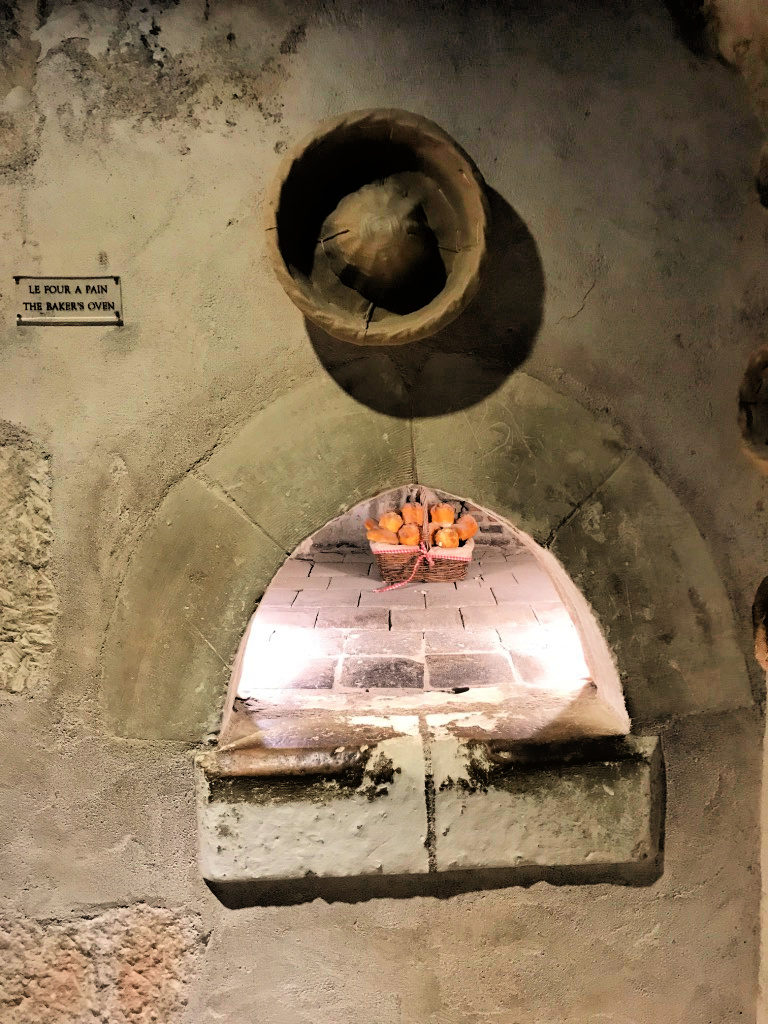
The original “Four a Pain” (Baker’s oven) 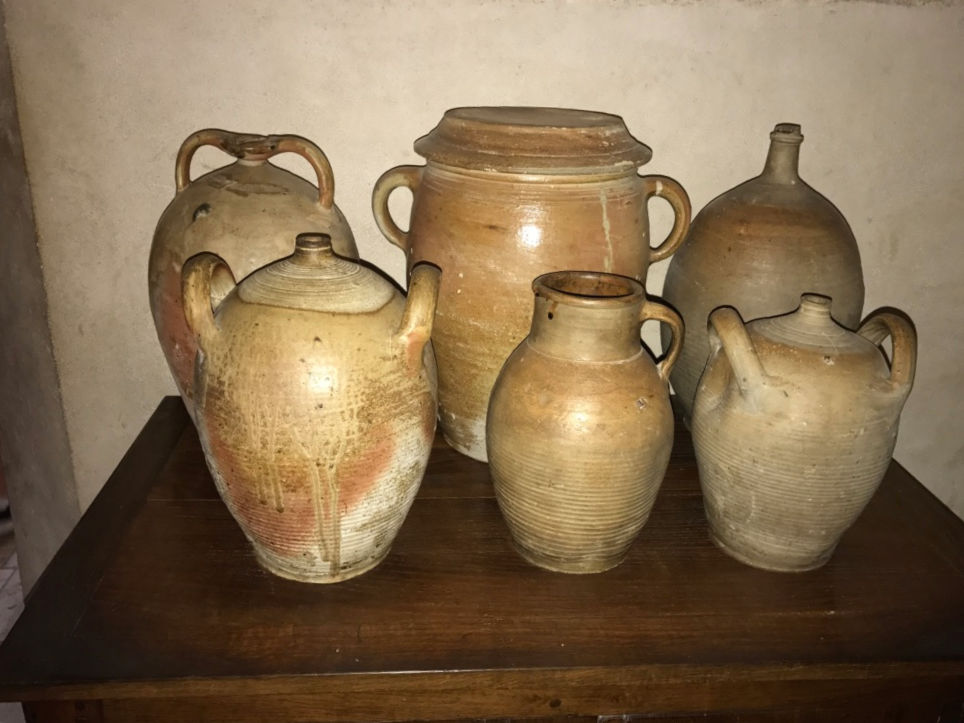
Various vessels for serving
Gardens of the Château de Chenonceau
The Diane de Poitiers Garden is quite impressive. It borders the river and is designed in true Renaissance style. Two perpendicular alleys and two other diagonal alleys border 8 large triangles of grass decorated with delicate flowers. The original water feature is still there, just as in the time of Diane de Poitiers. The terraced garden is raised, so as to avoid damage from when the Cher river overflows. All around are shrubs, yews, boxwood, laurels, all perfectly manicured. Hibiscus bloom in the summer and flowers bordering the pathways reinforce the rigorous geometry of the garden, while roses climb the walls, giving the Château a romantic feel.
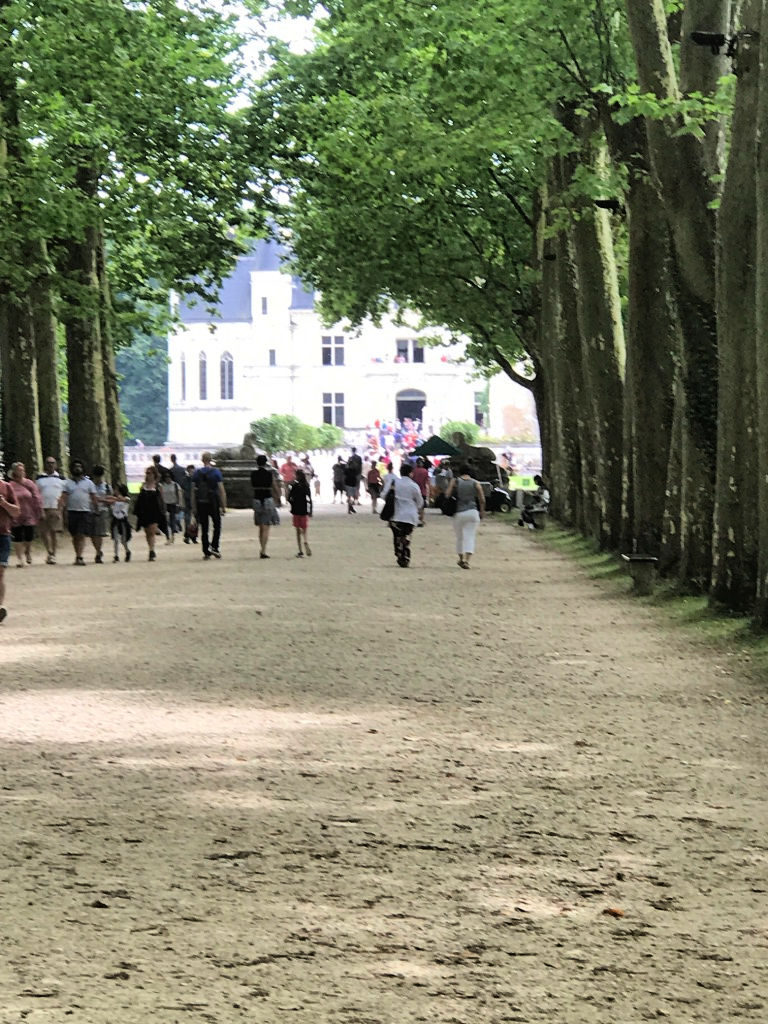
Meanwhile, the Catherine de’ Medici garden is where there is the best view of the west façade of the Château. It is laid out in 5 panels of lawn around an elegant circular water fountain, punctuated with perfectly round boxwoods. To the East, the garden is full of roses and lavender.
Practical Information
In terms of amenities, the château today has an upscale restaurant, L’Orangerie (reservations definitely recommended), as well as a casual restaurant and “creperie”. In addition, it has a lovely wine cave where you can taste local wines in a vaulted cellar dating back to the 16th century. Many visitors enjoy picnicking along the moat at the entrance of the château. There is parking nearby and a charming gift shop. For the most part, the château opens at 9am all throughout the year and closing times depend on the time of year.
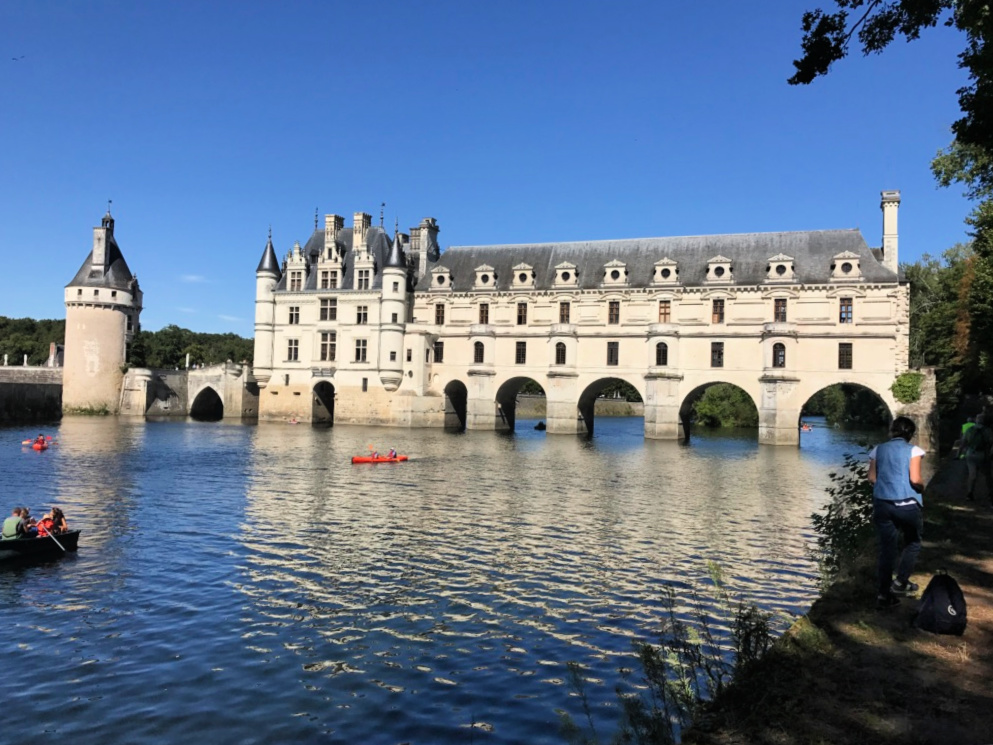
I end this post with a quote that I read in the gallery of the Château de Chenonceau, which I found quite beautiful:
Let’s look at it from a new perspective, leaving aside these very well-known figures, these silhouettes on the magic lantern of French history. Let’s give a thought to some other successive occupants of the Château, anonymous inhabitants who are far more numerous than those we know or believe we know…
Let’s take a few steps back: let’s think about the countless generations of birds that have flocked around these walls, the skillful architecture of their nests, the royal genealogies of the animals in the forest and their dens or their unadorned shelters, their hidden life, their almost always-tragic death, so often at the hand of man.
Take another step along the paths: let’s dream about the great race of trees, with different species taking over in succession, compared to whose age four or five hundred years means nothing.
Another step further on, far from any human concerns, here is the water in the river, water that is both older and newer than any other form, and which has for centuries washed the cast-offs of history. Visiting old residences can lead us to see things in a rather unexpected way.
– Marguerite Yourcenar, de l’Académie Française (1903-1987), « Sous bénéfice d’inventaire » 1962
Are you interested in more architecture in France? You can join my Facebook Group, “Art and Architecture of France” for more inspiration.
Additionally, in my FREE course, Paris Like a Pro, I discuss the history of the 5 most important monuments in Paris. Sign up for the course here.
Did you enjoy reading about the Château de Chenonceau? Please sign up for my newsletter to stay up to date on Art, Architecture and Cultural Travel.

Missy
May 23, 2019 at 8:26 amLove learning about history and the gardens. When we visit a new place, we seek out the local plants. I appreciate the flowers. 🙂
Glory
May 23, 2019 at 2:05 pmThe gardens were amazing!
jen
May 23, 2019 at 9:38 amWhat a fabulous post! I love it!
Glory
May 23, 2019 at 2:05 pmThank you!
Hera
May 24, 2019 at 6:19 pmWhat a gorgeous chateau! It’s like living in a fairytale. Great post and history on it too.
Kristi @ Way Beyond The Norm
May 23, 2019 at 10:01 amWhat a beautiful place! Love all the pictures. I think the kitchen is pretty interesting too.
Glory
May 23, 2019 at 2:05 pmThank you!
Shannon Delaney
May 23, 2019 at 10:07 amSo pretty! I love the view of the river in front of it! I love these old medieval buildings. Would love to experience it one day.
Lisa
May 23, 2019 at 1:54 pmHistorical Travel is so fascinating!
Shirley
May 23, 2019 at 2:15 pmWow, I would love to visit here! I’m going to bookmark this article for future reference and put a visit to the Ladies Chateau high on my bucket list. Thank you!
Glory
May 24, 2019 at 5:40 amIt is spectacular!
kmf
May 23, 2019 at 3:47 pmThis chateau is my kind of place! Definitely adding it to my travel bucket list…so beautiful!
Glory
May 24, 2019 at 5:40 amYou will love it!
Amanda
May 23, 2019 at 6:26 pmI will for sure be visiting Château de Chenonceau, the ladies Château! It is stunning!
Glory
May 24, 2019 at 5:41 amThere is so much to see in the Loire Valley, but this is a must-see!
Lori Nielsen
May 23, 2019 at 8:33 pmI really enjoy visiting historical homes. It’s so fun to find out how people lived in other times. Beautiful Chateau!
Glory
May 24, 2019 at 5:42 amDefinitely a lot of history in the château!
Michele
May 24, 2019 at 2:16 amAbsolutely beautiful! We love to add history into our travels as well! So much more meaningful!
Glory
May 24, 2019 at 5:42 amI hope you have the chance to visit someday!
Heather
May 24, 2019 at 5:49 amWow, this is breathtaking. I would love to see it in person.
Julie Gazdecki
May 24, 2019 at 9:12 amLove learning about the history of such stunning architecture!!
Vessy Smith
May 24, 2019 at 11:20 amAaaah! What an absolutely gorgeous place! Reading your post and looking at these beautiful photos really made me miss France soooo much! It is definitely time to plan a trip back there again! I will make a point to check out this chateau for sure! 🙂
Marianne Blackham
May 26, 2019 at 9:08 amAfter reading this post, I want to visit there! I added it to my bucket list.
Glory
May 27, 2019 at 9:42 amI hope you can make it!
Amanda
June 4, 2019 at 2:57 pmThat is gorgeous! We are planning on visiting France for the first time next spring. I am definitely putting this on our list of things to do there! Thanks!